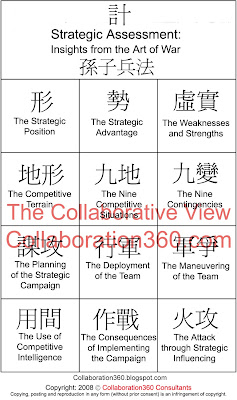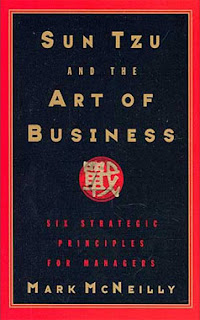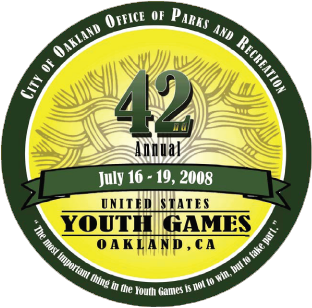WASHINGTON — Russia’s victorious military blitz into the former Soviet republic of Georgia brought something old and something new — but none of it was impromptu, despite appearances that a long-frozen conflict had suddenly turned hot.
The Russian military borrowed a page from classic Soviet-era doctrine: Moscow’s commanders sent an absolutely overwhelming force into Georgia. It was never going to be an even fight, and the outcome was predictable, if not preordained.
/// In any "real" competition, there is no such thing as even parity.
At the same time, the Russian military picked up what is new from the latest in military thinking, including American military writings about the art of war, replete with the hard-learned lessons of Iraq and Afghanistan.
So along with the old-school onslaught of infantry, armor and artillery, Russia mounted joint air and naval operations, appeared to launch simultaneous cyberattacks on Georgian government Web sites and had its best English speakers at the ready to make Moscow’s case in television appearances.
If the rapidly unfolding events caught much of the world off guard, that kind of coordination of the old and the new did not look accidental to military professionals.
“They seem to have harnessed all their instruments of national power — military, diplomatic, information — in a very disciplined way,” said one Pentagon official, who like others interviewed for this article disclosed details of the operation under ground rules that called for anonymity. “It appears this was well thought out and planned in advance, and suggests a level of coordination in the Russian government between the military and the other civilian agencies and departments that we are striving for today.”
In fact, Pentagon and military officials say Russia held a major ground exercise in July just north of Georgia’s border, called Caucasus 2008, that played out a chain of events like the one carried out over recent days.
“This exercise was exactly what they executed in Georgia just a few weeks later,” said Dale Herspring, an expert on Russian military affairs at Kansas State University. “This exercise was a complete dress rehearsal.”
/// In some project culture, "amateur professionals" rarely spent enough time preparing and rehearsing their implementation.
1st rule of preparation is ...The amount of time it takes to deploy one's plan is inversely proportional to the amount of time that is spent planning your plan
Compass AE process requires the project implementers to review and rehearse their recently-built Tangible Vision process before connecting to it. ///
Russian commentators have countered that more than 1,000 American military personnel were in Georgia for an exercise last month. But that exercise focused on counterinsurgency operations to prepare a Georgian brigade for duty in Iraq, a different mission than the seizing of territory or denying an aggressor a new stake on the land.
Even as the Russian military succeeded at its most obvious objectives — taking control of South Ossetia and Abkhazia, humiliating the Georgian government and crippling the republic’s army and police units — serious shortcomings on the Russian side were revealed during the brief fighting, Pentagon and military officials said.
To the surprise of American military officers, an impaired Georgian air-defense system was able to down at least six Russian jets. The Sukhoi-25, an aging ground attack plane, appeared to be the most vulnerable.
Georgia never has fielded an integrated, nationwide air defense system, and those ground-to-air weapons that survived early Russian shelling operated without any central control — and some without battle-command radars, as they were destroyed by Russian strikes.
That they bloodied the Russian air wing was taken as a clear sign of poor Russian aircraft maintenance, poor Russian piloting skills — or, most likely, years of insufficient funds for adequate flight training.
Russian-language media and unofficial national security Web sites in Moscow, which since the days of the disastrous Soviet foray into Afghanistan have developed a skeptical independent streak, also noted other shortcomings.
A Russian general in command of the 58th Army was wounded in the leg when he led a column of 30 armored vehicles toward the capital of South Ossetia, apparently without sufficient intelligence from scouts on the ground or surveillance aircraft overhead to know a Georgian ambush was awaiting.
The Russians also suffered losses as they came through the Roki Tunnel, which connects South Ossetia to the neighboring region of North Ossetia in Russia proper. Russian national security analysts said there was no air cover to protect Moscow’s forces in their first minutes on Georgian soil outside the safety of the mountain tunnel.
Despite these failings, the Russian military was able to coordinate infantry advances with movement of airborne troops, simultaneously with the deployment of armor and artillery. To be sure, they only had to travel short distances, but Russia was able to inject 9,000 to 10,000 troops, 150 tanks and 700 other armored vehicles onto Georgian territory in the first weekend of fighting, officials said.
Russian warships moved off the coast of Georgia, and Russian special operations forces infiltrated into Georgia through Abkhazia, according to Pentagon and military officials.
“This was not the Russian Army from the humiliation of Afghanistan, and it’s not the Russian military that had to flatten Chechnya to save it,” said one Pentagon official knowledgeable of how the fighting unfolded. Another said: “The Russian military is back. They are to be contended with.”
Despite a recent increase in Russian long-range bomber flights along old, cold war routes near United States airspace, the offensive into Georgia gave little indication of a renewed capacity or renewed interest in global projection of power by the Russians.
But Moscow’s military is wholly capable of pressing the Kremlin’s designs on hegemony over the formerly Communist states along the border that Russian leaders call “the near abroad.”
Russia prepared the battlefield in the months leading up to the outbreak of fighting.
In April, Russia reinforced its peacekeeping force in Abkhazia with advanced artillery, and in May it sent construction troops to fix a railroad line linking that area with Russia.
Georgia’s overmatched army of about 30,000 was able to field four combat brigades of about 3,300 soldiers each.
At the start of the fighting, the Georgian Army’s First Brigade was in Iraq, and subsequently was airlifted home aboard American aircraft — but without their war-fighting gear. The Fourth Brigade was in training for the next rotation to Iraq. The Second and Third Brigades were in western Georgia, closer to Abkhazia than to South Ossetia, where the fighting started.
The American military training for the Georgian troops has been described as involving counterterrorism for domestic security and counterinsurgency for the Iraq mission, with little emphasis on taking ground, holding ground or defending against invasion.
The influx of American training and American support might have left the Georgians feeling that their far smaller military could stand up to Russia in asserting sovereignty over South Ossetia and Abkhazia.
But Georgian command and control withered quickly under the Russian attack, and army and police units were operating on their own, often at cross purposes or overlapping missions.
/// Opposing operational responsibilities create internal conflicts. It also wastes time and resources.
With our Compass AE process, the implementers always know their objectives and how it connects to other team's objectives . A collaboratively-built Tangible Vision increases efficiency while eliminating redundancy. ///
Although the Georgian units had been taught that speed of operations brings a mass all its own to the battlefield, and that improving accuracy in firepower brings a mass all its own, the lesson of the conflict is that, in some cases, mass has a mass all its own.
Russia easily smothered the smaller Georgian force.
http://www.nytimes.com/2008/08/17/world/europe/17military.html 












